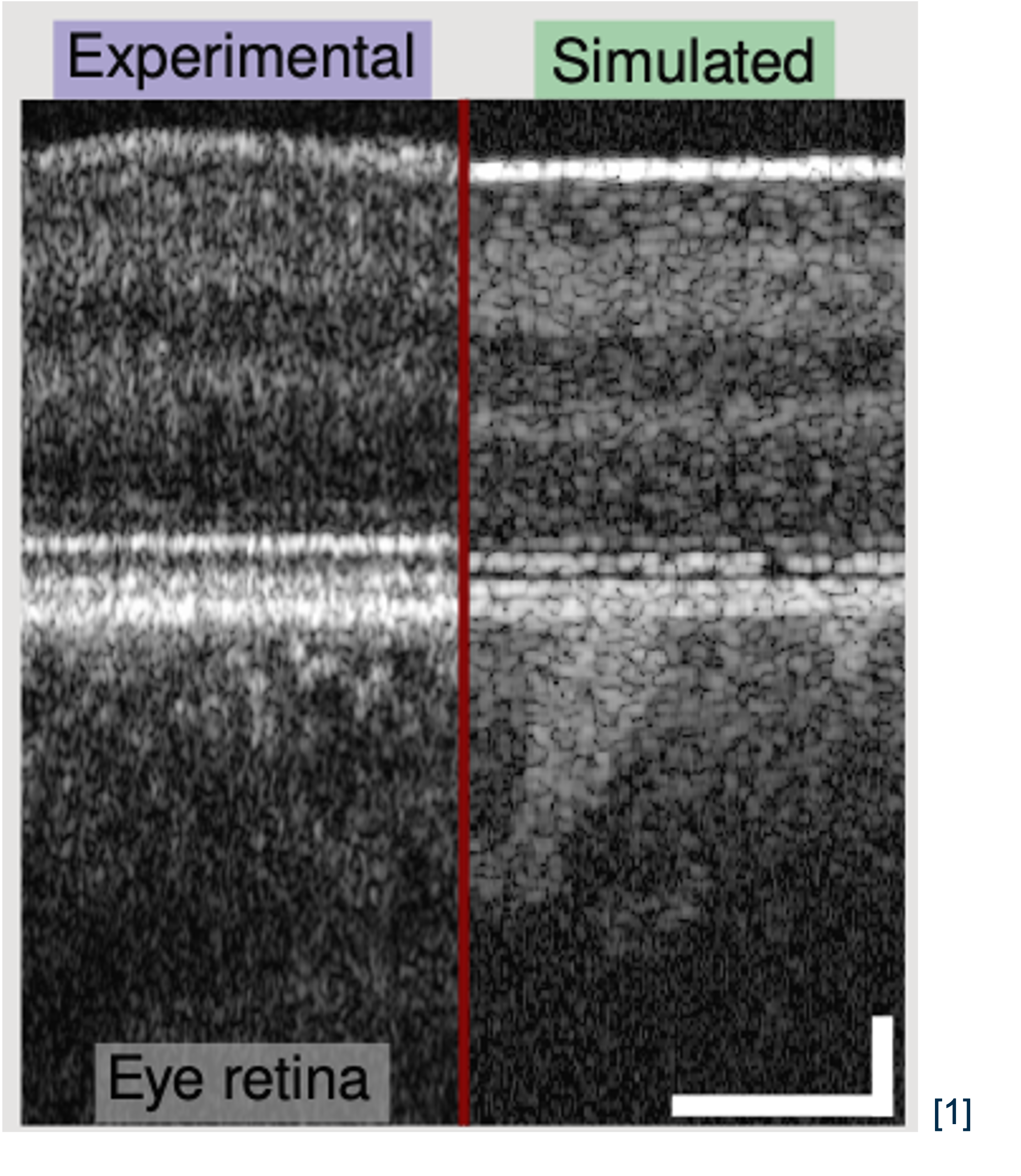Adapting and Validating an OCT Simulation Framework for Experimental Phantoms
- chair:Optical Technologies in Medicine
- type:Student Project and Bachelor's Thesis or Master Thesis
- tutor:
-
Motivation
Optical Coherence Tomography (OCT) has become a central imaging technique in biomedical research, providing non-invasive, high-resolution insights into tissue structure and function. For developing and testing new algorithms, simulated OCT data is especially valuable: it allows controlled variation of parameters, enables the independent study of individual influencing factors, and provides reliable ground truth. We plan to extend an existing OCT simulator [1] so that it accurately reproduces the characteristics of our system and experimental phantoms. This will establish a direct link between simulation and experiment and create a basis for exploring advanced extensions such as OCT angiography (OCTA).
Task description
The project focuses on adapting and validating the OCT simulator with respect to our experimental setup and phantom measurements.
The main steps include:
- Modeling experimental sampels (milk–water suspensions, layered tissue-mimicking media).
- Preparing the ground for extensions such as repeated B-scans for OCT angiographyRequirements:
- Programming experience in MATLAB (or Python with scientific libraries).
- Ability to study and adapt existing code.
- Basic knowledge in optics and OCT principles.
- Interest in image/signal processing and simulation.[1] Ruiz-Lopera S., Bouma B.E., Uribe-Patarroyo N., An Efficient Simulation Tool for Optical Coherence Tomography, Proc. SPIE 12830 (2024), 128301O. https://doi.org/10.1117/12.3005755

